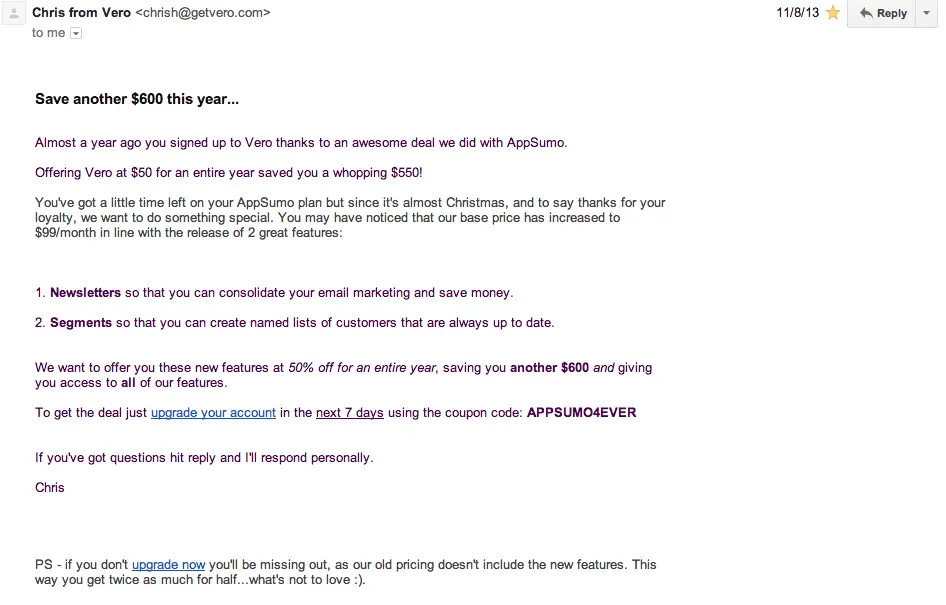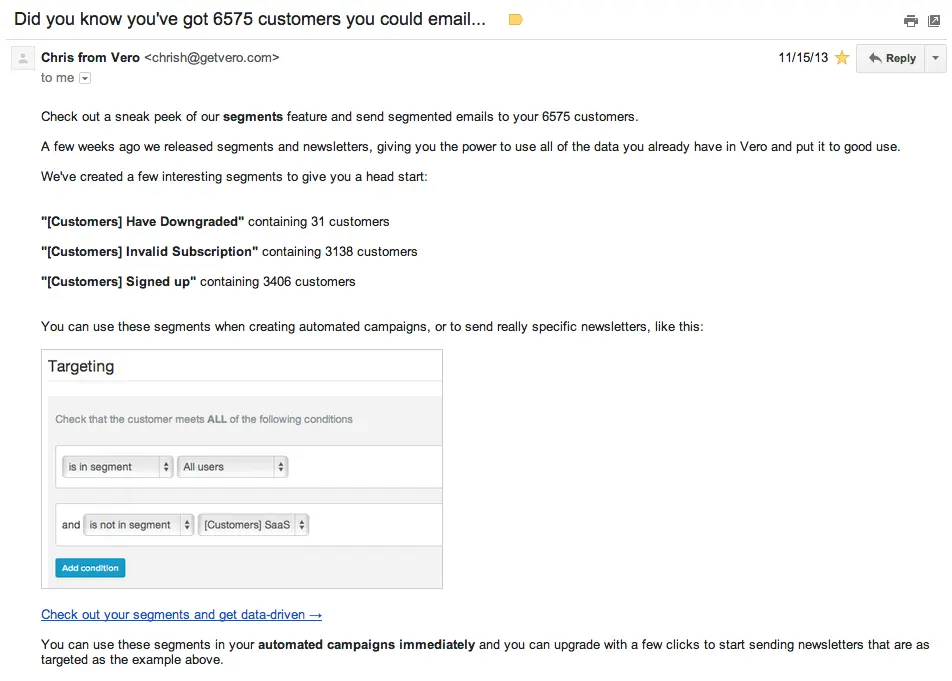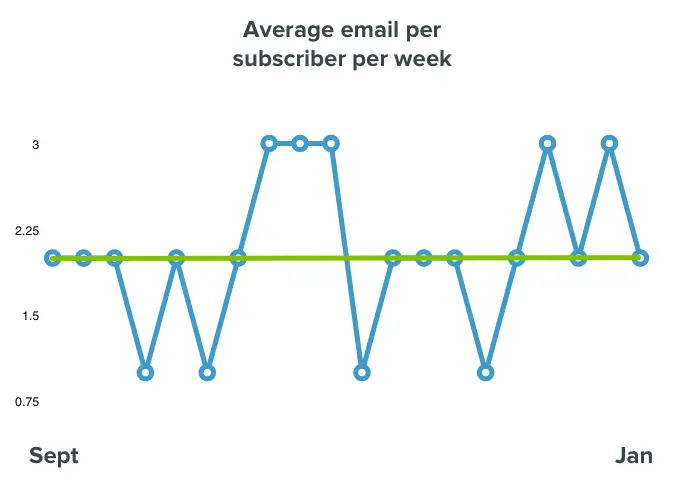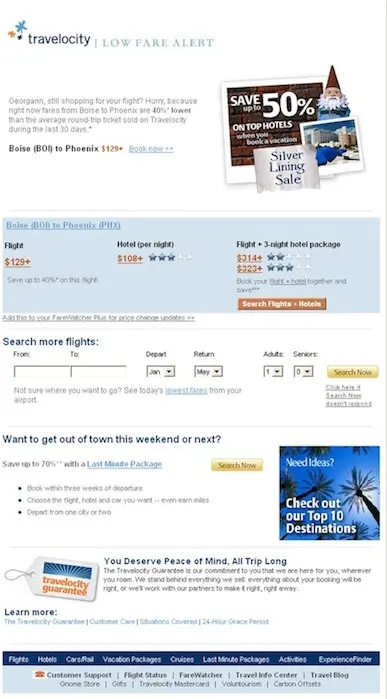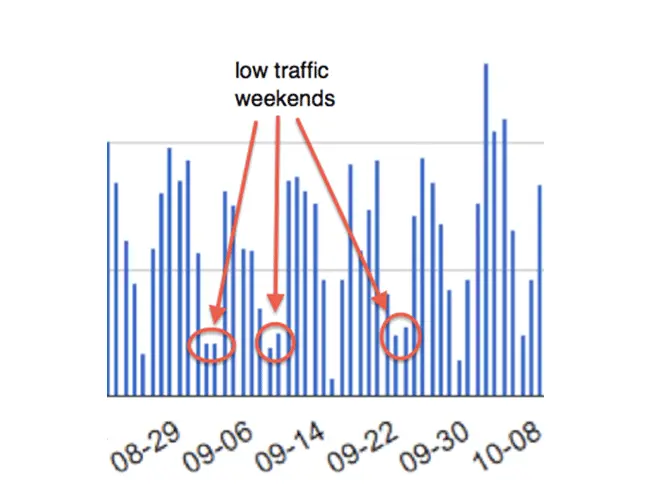- All Posts
- /
- Optimize Your Email Campaigns
Optimize Your Email Campaigns
Messaging and Automation-
 Chris Hexton
Chris Hexton
-
Updated:Posted:
On this page
Segment your subscribers
Segmenting your customers allows you to send more granular emails. This, in turn, means that you’ll send emails that resonate with each and every recipient – this keeps you and your customers happier: they get better emails, you get more conversions.
Two primary ways to segment your customers:
- Using their attributes, for example, age, location
- Using their behavior, for example, when they last visited, how many times they’ve purchased, if they’ve used a certain feature of your product
Let’s dive into some detailed examples so you can see segmentation in action as a way to optimize your campaigns.
1. Using your customers’ attributes
There are plenty of ways you can use these two axes to segment your database, but using your customers’ attributes is definitely the simplest place to start.
Simple information that you may already collect about them such as their company size, business title, age, gender, LTV, the country they live in, specific preferences and so on, can make a big difference.
ASOS does a great job of showing how easy it can be to segment your database. As an online retailer without a doubt the most basic level of segmentation comes from knowing whether the subscriber is male or female.
What is great about this example from ASOS (we mentioned it earlier) is the implementation.
Not only do they choose the most powerful data point on which to segment but they make it super easy to provide this data as a subscriber. In fact, you can’t subscribe without giving this extra information as they have used separate ‘Man’ and ‘Woman’ submit buttons (rather than a separate input field):
The team at Vero recently spent a lot of time thinking about segmentation as an optimization tool. Focusing on their total email conversion metric, we were able to lift conversions from an average of 2% to an average of 7.9%.
One of the starting points for this process was to look at what data was available on each of Vero’s customers.
A great example of segmentation based on customer attributes was a campaign we ran to AppSumo customers.
In 2012 we offered new subscribers up to 90% off for an entire year. This was a great offer and, by October 2013, it fortunately meant that there were lots of very active customers that were nearing the end of their AppSumo discount period.
By looking at their status as an AppSumo customer, the value of their current plan and their expiry date of their coupon, we were able to create two distinct segments.
One of these was a highly targeted group of customers that were using Vero regularly, had a coupon that would expire within 3 months and had not chosen to upgrade to one of Vero’s newer features (newsletters).
In order to get these customers to upgrade earlier (better for our SaaS LTV) and to get them use the new newsletters feature, we decided to offer them an extra 50% off for another 12 months on our new pricing plans, which included the newsletter feature.
Here’s the campaign in action:
The goal fo this campaign was to get these customers using the new newsletters feature.
In contrast, the second segment we created with the same goal targeted full-paying customers that were also not using the new newsletters feature. Instead of sending them a discount, we introduced them to the newsletters feature in a more specific manner and sent this campaign:
This is a great example of segmentation in action, particularly as the first campaign here achieved a conversion rate of over 25%. It would not have achieved that had it been sent to all customers and, further more, it would have been detrimental to our overall communication strategy.
By applying this sort of segmentation for four months, we were able to dramatically increase email conversions in a way that did not mean we were constantly spamming there customers.
Certainly, over that period, we sent more emails:
…but, digging deeper, we can see that the number of emails per subscriber didn’t change dramatically, if at all. This shows that it was not merely sending more emails but the actual context of each email that led to the increased conversions.
These two graphs represent better than anything else the power of segmentation to provide a win-win: cost effective email marketing that delivers emails customers want that convert at a higher rate.
2. Track your customers’ online behavior
The results are even more meaningful when you start using your customers online behavior to segment your database.
Keeping track of past purchases, what features a customer has used and understanding the last time they visited your site all basic examples of behavior you can track to send more relevant emails.
Many businesses spend a lot of time using customer behaviour to influence on-site UX or the ads that a customers sees but it’s important to remember that you can use the same data to tailor your email marketing campaigns.
No email marketing guide would be complete without examples from the masters of trigger-based email, Amazon.
The entire Amazon experience is about one-to-one customization. If you visit their homepage you’ll see that everything is customtimized. From your name at the top right to the recommended products you see, they spend a lot of time ensuring your experience is a personal one:

Needless to say, they do the same with their email marketing and they do it tremendously well. Here’s an example:

Another of their great campaigns is this one:

Both of these emails are based on tracking the individual products a customer views and/or purchases. The products featured in the emails reflect the granularity you can only get if you segment based on customer behavior.
Another example comes from Aer Lingus (the national Irish airline):
This campaign targets customers that have booked a flight recently and are heading to an Irish destination. Rather than sending you deals on any destination, this email is heavily focused on your destination.
Again, tracking individual customer actions allows Aer Lingus to increase conversion rates thanks to tightly-targeted deals. Savvy.
Emailing customers based on their interactions with other users is extremely effective (if your business allows this approach).
Companies like Facebook and Twitter use social data to drive their campaigns. Here’s an example from Twitter that you are probably familiar with:
Here’s a similar example from social-shopping site Svpply:
As social data becomes more and more ubiquitous, other companies (i.e. not the social networks themselves) are starting to use this data to drive engagement, retention and acquisition.
Gaming and other apps built on top of the Facebook platform are a classic example of businesses that can use the power of social data when it comes to email marketing. Take this great example from Zynga:
With your marketing plan in hand, capture as much as you can about your customers’ actions: this will give you more power to segment and automate in the future.
Make it easy for subscribers to opt-out of emails
This may seem odd at first, but giving customers the chance to opt-out at any time is, in fact, a great way to keep your list optimized.
The rules of email are always changing but the top three rules you must follow when sending promotional emails are:
- You must include an unsubscribe link in your marketing emails.
- From addresses and names and subject lines must be relevant (not misleading). ‘Unsolicited’ (bulk marketing emails) must include a legitimate physical address of the sender.
- You cannot email harvested addresses or include false headers in your emails (technical stuff). Ask permission, basically!
In many countries, the penalties for not abiding by these rules are quite severe and can include fines into the 10s of thousands of dollars.
The rules here are pretty much common sense, the main point coming back to: don’t harvest masses of random emails from around the internet and send them promotional emails.
Be sensible!
Without any rules like this, there’d be chaos.
Fab.com implemented a proactive approach to ensuring their list is always targeting engaged customers:
This is inspirational. It is worth thinking about the fact that list size is not everything. Fab.com may have a huge list and engaging business model but the sheer honesty of this automated campaign is powerful.
To send something like this you’ll want to track your customers’ open and click behavior/inactivity and use this to unsubscribe your customers if they don’t actively re-engage.
How can you break the norms of email marketing and benefit, like Fab.com?
A/B testing
A/B testing email marketing campaigns definitely deserves more than a single section within this guide.
Testing may be the most powerful conversion optimization strategy there is. The great news is that hardly anyone tests their trigger-based automated campaigns.
Why is this great? Because you have a huge opportunity to get ahead of the pack.
Creating a culture of experimentation within organization should be one of the most important priorities for any leader or manager. Apart from giving the obvious results in terms of increased sales and profits, it also leads to a culture of healthy questioning within the organization. Instead of people saying ‘let’s do this because I think so’, saying ‘let’s try it out and see what’s better’ is always preferable.
Via Paras Chopra of Visual Website Optimizer.
Other than the godfather of email marketing, Amazon, there are very few examples out there of companies that invest as heavily in testing and refining their email campaigns.
In the past there were a few reasons for this:
- It was hard to track revenue and conversions.
- Testing tools had to be built in house, there was no platform for testing trigger-based emails.
- Email was ‘simple’ with less opportunity for innovation and invention.
All of these roadblocks no longer exist: there is now no excuse not to conduct A/B tests on all of your email marketing campaigns: newsletters and trigger-based campaigns alike.
Take this example from Dan at WPCurve.
Dan tests all of his email subject lines from newsletters to trigger-based workflows. He uses the email variations he sends as a means to gauge the most effective subject line and, in turn, the most effective email.
Another great example comes from Flightfox who doubled the effectiveness of their primary automated behavioral campaign, lifting the total impact of emails on their cart process to a 10% increase in conversions. Their champion variation uses a simple, rich-text Q&A style to bring inc onversions:
Coming up with things to test isn’t so hard, here are a few things you can test immediately
- Test a subject line, every time you send or at least once per week.
- Think about your CTA and the copy. Replace ‘Submit’, ‘Continue’ and other words with more meaningful CTA copy on your buttons.
- Play with formats: how can you break up your CTA? Could you use a question and answer style? Should you use long-form, ‘story’ style email copy?
- HTML vs basic rich text?
- Do images help sell your recipients or do they hinder?
- Should you send three emails in a row or just a single email?
We could talk about A/B testing all day. If you’re after tips on how to conduct tests and a bunch of other ideas, read this article on A/B testing tricks so good you’ll kick yourself you’ve been missing out.
Best time to send
A common question people ask once they have their basic email plan in order is: what time should I actually send my emails?
KISSmetrics pulled together a great infographic detailing the most common times customers’ engage with their emails, particularly on mobile devices.
A lot of the data here follows common sense: customers are likely to check their emails when they work up or first thing at work and again as they round out their day (before heading home and possible before going to bed).
Sandi over at Quibb also published her approach to maintaining open rates of 70% and above.
One of her strategies was to skip sending her ‘daily digests’ on the weekend. This was based on observation of real data that her audience was far less engaged on the weekend.
This may hold true for you, or it may not: some extremely recent research from Mailchimp suggests that there is no ‘ideal time to send an email’. They come to this conclusion by examining the results of the millions of emails they send each week. The result shows that emails sent at a whole number of different times are extremely effective.
What does this mean? Know your audience!
Are your primary users 20 year old college students that check their email once a day? Are they Blackberry-weilding bankers that can’t switch off? Are they slightly older customers that review email every few days.
The best advice here is to consider the average day of your ideal customer and email relative to that. From there you can test your way to the ‘perfect’ time for you.
